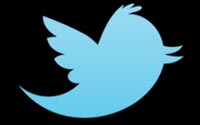 Twitter introduced interest-based ad targeting for Promoted Tweets and Promoted Accounts campaigns on Thursday, capitalizing on similarities between
like-minded groups of followers and their friends.
Twitter introduced interest-based ad targeting for Promoted Tweets and Promoted Accounts campaigns on Thursday, capitalizing on similarities between
like-minded groups of followers and their friends.
The company has been testing interest-based targeting with several advertisers, like Bonobos, an e-tailer of men's apparel. Supported by more
than 350 categories, such as education, home and garden, investing, and soccer, the tool allows brands to widen or narrow the reach of targeted ads.
Bonobos held a 24-hour sale exclusively on
Twitter, and got word out by promoting Tweets to followers, along with Twitter users similar to the brand's followers. This targeting resulted in an average engagement rate for Promoted Tweets
campaigns between 1% and 3%.
Aside from Bonobos, Twitter spokesperson Will Stickney said several companies tested the tool, such as Walgreens, and Electronic Arts.
Targeting interests
allows brands to connect with followers more likely to engage with tweets. Twitter looks at several signals, including geographic location and keywords in tweets to understand interests. Twitter
considers interests to determine the type of content to serve up in "Discover" or recommends in the "Who to Follow" feature.
Frank Lee, head of sales at DataPop, a paid search management
platform, said search works well because it infers intent. "Twitter is the closest media that can infer intent similar to search, even more so than Facebook or display advertisers," he said.
Advertisers can create custom segments by specifying certain @usernames relevant to the product, the event or the initiative. Custom audience segments enable advertisers to reach Twitter users with
similar interests to that @username's followers.
The ad-targeting tool does not allow the brand to target the followers of that @username.
Kevin Weil, director of product management at
Twitter, explains that the tool will help brands reach beyond a company's followers with similar interests to target the most relevant audience for specific campaigns.
Twitter also lowered the
minimum bid to one cent for all of auctions, Weil explains. Auction-based Promoted Products relies on the winning engagement bid and rates. Weil believes the combination of interest targeting and the
lower bid supported by better content will drive higher return on investments for campaigns.